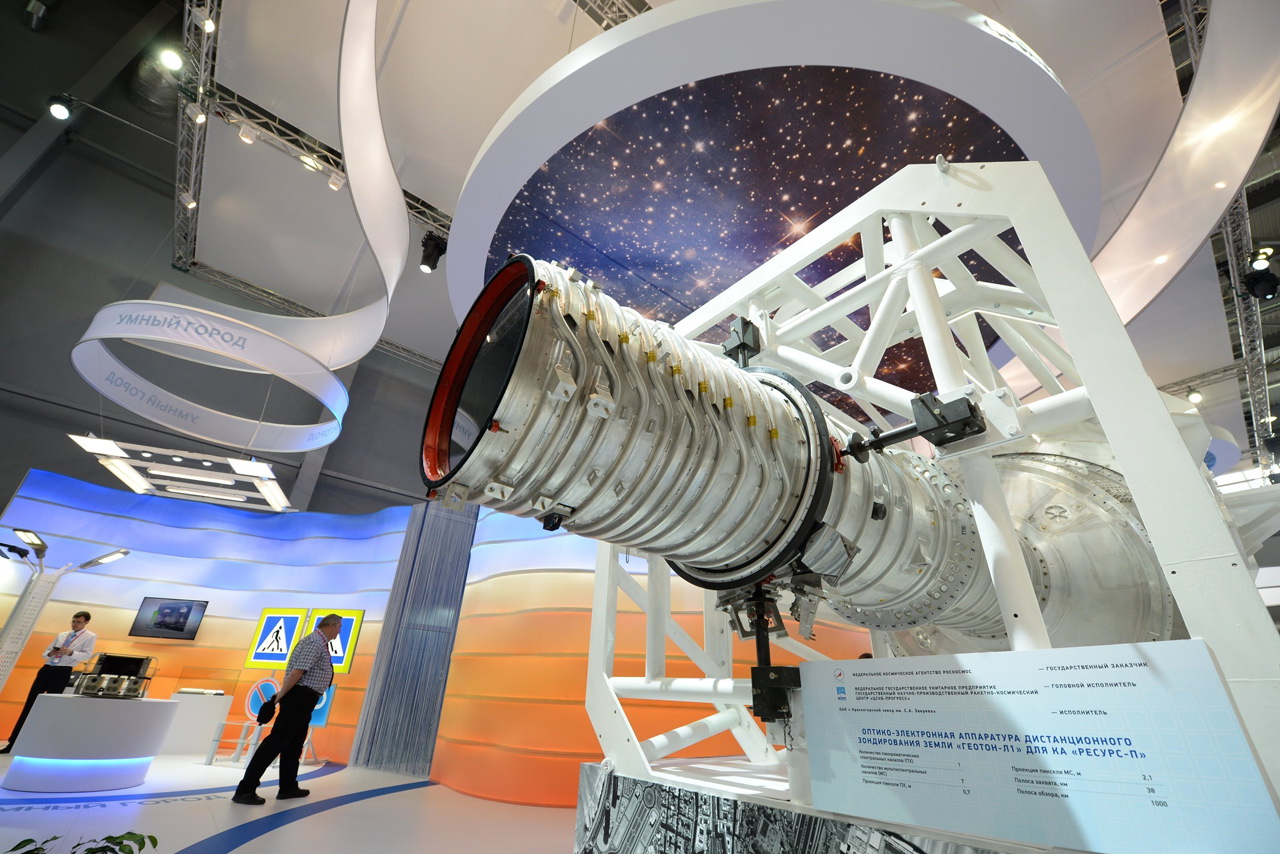
© EngineeringRussia
The Russian Defense Ministry will construct more than ten complexes of new-generation space surveillance systems, increasing the precision of space observation. This would "
reduce the minimum size of space objects detected by 2-3 times,"
the press release said. Roscosmos plans to launch more satellites and set up global imaging center to become a major player in Earth remote sensing services and meet commercial orders for imagery from foreign states and private companies. The facility will bring together all Russia's satellite imaging equipment for taking pictures of the Earth and aims to have 20 satellites at its disposal by 2025.
The current fleet of satellite imaging equipment held by the Research Center for Earth Operative Monitoring comprises two Resurs-P and one Resurs-DK1 satellites, capable of acquiring imaging with a resolution of up to one meter, one Kanopus-B with a resolution of images of up to two meters, and three meteorological units.

© Sputnik/ Pavel LisitsynGeoton L1 optical electronic equipment for remote probing of the Earth by the Resurs-P space probe
Images from the Resurs-P satellites are used by Russian government ministries, including the Emergencies Ministry, the Ministry of Agriculture, and the Environment Ministry.
Improvements to the satellite fleet have already been set in motion for the coming years, said the spokesman. Work on the production of the Obzor-O four-satellite constellation system will begin in 2016, and another Resurs-P satellite is set for launch this year.
The new Vostochny Space Center is under construction in the Amur Region of Russia's Far East since 2012. The first piloted spacecraft is expected to take off from Vostochny in 2018.
Vostochny will enable Russia to launch most missions from its own soil, reducing the country's reliance on the Baikonur space station in Kazakhstan.





Comment: Is Russia expecting trouble in Kazakhstan? A number of earthquakes already hit the region:
- Earthquake Magnitude 5.4 - Eastern Kazakhstan
- Magnitude 5.4 earthquake hits Kazakhstan - USGS
- Magnitude 4.9 - Central Kazakhstan
- Earthquake Magnitude 6.0 - SE of Kegen, Kazakhstan
Kazakhstan also experienced cases of increased animal deaths: